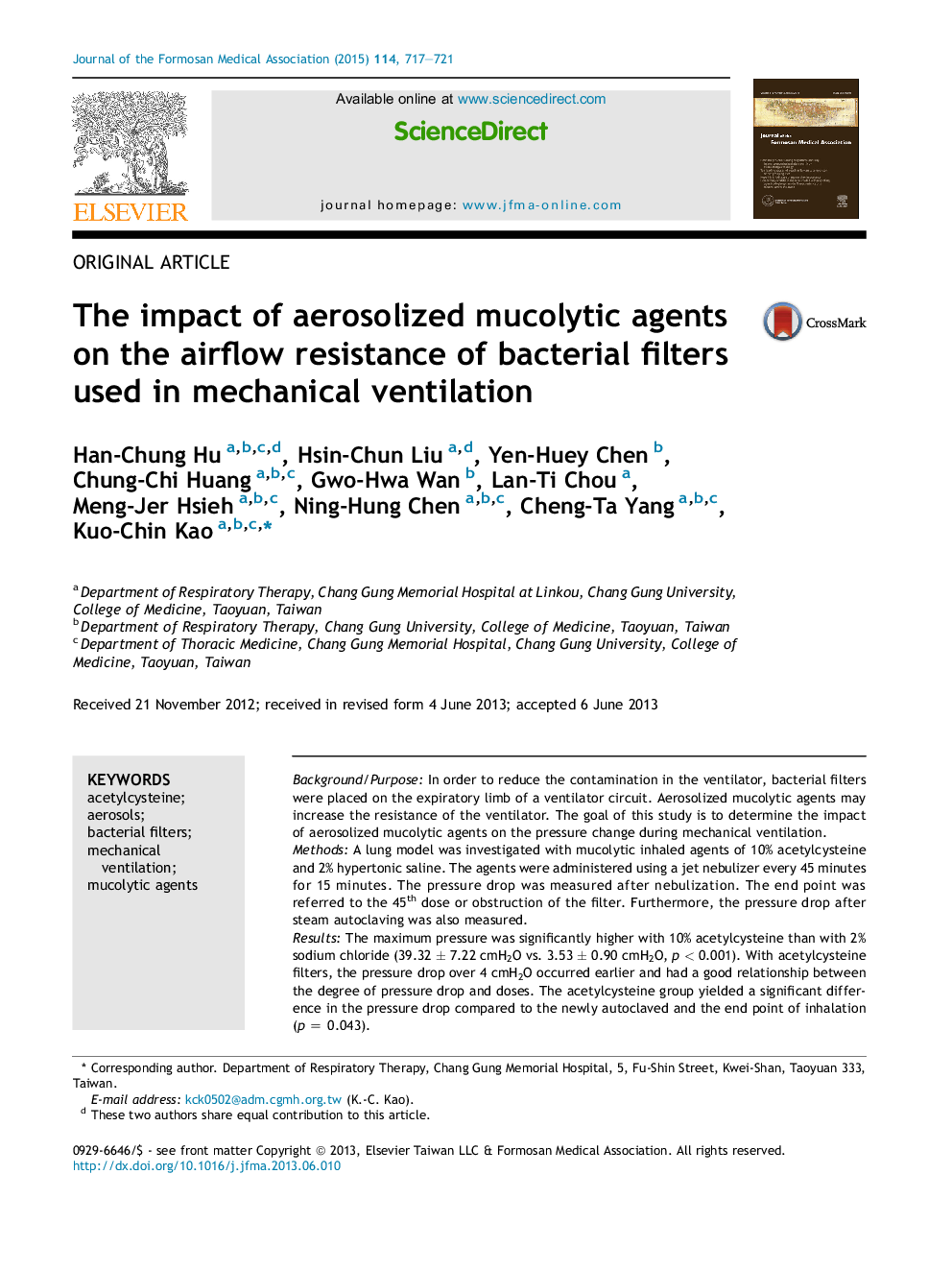| Article ID | Journal | Published Year | Pages | File Type |
|---|---|---|---|---|
| 3478629 | Journal of the Formosan Medical Association | 2015 | 5 Pages |
Background/PurposeIn order to reduce the contamination in the ventilator, bacterial filters were placed on the expiratory limb of a ventilator circuit. Aerosolized mucolytic agents may increase the resistance of the ventilator. The goal of this study is to determine the impact of aerosolized mucolytic agents on the pressure change during mechanical ventilation.MethodsA lung model was investigated with mucolytic inhaled agents of 10% acetylcysteine and 2% hypertonic saline. The agents were administered using a jet nebulizer every 45 minutes for 15 minutes. The pressure drop was measured after nebulization. The end point was referred to the 45th dose or obstruction of the filter. Furthermore, the pressure drop after steam autoclaving was also measured.ResultsThe maximum pressure was significantly higher with 10% acetylcysteine than with 2% sodium chloride (39.32 ± 7.22 cmH2O vs. 3.53 ± 0.90 cmH2O, p < 0.001). With acetylcysteine filters, the pressure drop over 4 cmH2O occurred earlier and had a good relationship between the degree of pressure drop and doses. The acetylcysteine group yielded a significant difference in the pressure drop compared to the newly autoclaved and the end point of inhalation (p = 0.043).ConclusionThis study demonstrated the aerosolized mucolytic agents could increase the pressure drop of the bacterial filters during mechanical ventilation. The pressure drop of the bacterial filters was higher with 10% acetylcysteine. It is critical to continuously monitor the expiration resistance, auto-positive end-expiratory pressure, and ventilator output waveform when aerosolized 10% acetylcysteine was used in mechanical ventilation patients.
